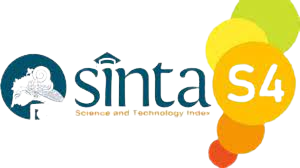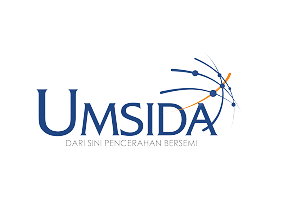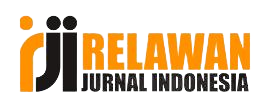Partisipasi Masyarakat Dalam Posyandu Di Kecamatan Sidoarjo
Community Participation in Posyandu in Sidoarjo District
DOI:
https://doi.org/10.21070/jkmp.v5i2.1315Keywords:
posyandu cadres, posyandu, community participationAbstract
This study aims to describe the role of posyandu cadres in mobilizing community participation, in the role of posyandu cadres strongly influencing the participation of the community due to many obstacles that occur in the implementation of posyandu resulted from decreasing the visit of mothers in posyandu program and increase or move the visit of mothers to come To the posyandu. The method used in this research is qualitative method. Data collection techniques used through observation, documentation, and interviews with posyandu midwives, posyandu cadres, and mothers with toddlers in mobilizing community participation in the candlenut village. The result of this research is the inactivity of posyandu cadres located in Kemiri Village made mothers reluctant to come to posyandu because some mothers considered posyandu one eye and mothers rely more on personal physician, and also lack of cadre that make progress of program of posyandu Become obstructed and disorderly. In addition, the facilities provided are less, many mothers who sat idolnya because of limited seating waiting for mothers and toddlers, as for other obstacles that the program is given settled course there is no new program that can increase the visit of mothers to came to posyandu and lack of innovation from posyandu cadres.References
Abadi, Totok W. (2011). “Makna Metodologi Penelitian.” dalam Kalamsiasi. Jurnal Ilmu Komunikasi dan Ilmu Administrasi Negara. Vol.4/2, hal.197-214. www.repository@umsida.ac.id
Abadi, Totok W, Nunung P, Budi G. (2014). “Performance e-government untuk Peningkatan Partisipasi Masyarakat dalam Pembangunan Infrastruktur di Kabupaten Sidoarjo.” dalam Kawistara, Jurnal Ilmiah Sosial dan Humaniora Universitas Gadjah Mada, vol.4/3, hal. 237-248
Departemen Kesehatan RI. (1993). Pedoman Pengujian dan Pengembangan Fitofarmaka, Penapisan Farmakologi, Pengujian Fitokimia dan Pengujian Klinik.Jakarta : Depkes RI pp 15-17.
Depkes RI. (2006) Informasi Indikasi Tanaman Obat Tradisional Jilid 1. Sentra Pengemangan dan Penerapan Pengobatan Tradisional (SP3T) Dinas Kesehatan, Jawa Tengah
Https://www.Posyandu.org,
Https://www.scribd.com/document/56451160
Thoha, M. (1997), Pembinaan Organisasi (Proses Diagnosa dan Intervensi), Jakarta:PT. Raja Grafindo Persada
Maryam S. R. (2010). Panduan Kader Posyandu Balita.TIM. Jakarta
Muktar dan Yamin. (2003). Belajar dan Pembelajaran Teori dan Aplikasi. Semarang: CV Anugerah
Notoatmodjo, S. (2007). Promosi Kesehatan dan Ilmu Perilaku. Jakarta : Rineka Cipta
Sitohang, S.R. (2003). Karakteristik Penderita Demam Tifoid Rawat Inap di Rumah Sakit Umum Sari Mutiara Medan Tahun 2001-2003. Skripsi FKM USU.
Slamet,Y. (1993). Analisis Kuantitatif Untuk Data Sosial. Solo : Dabara Publisher
Soekanto, S. (1987). Sosiologi Suatu Pengantar. Jakarta: Rajawali Pers.
Soekanto, S. (2002). Teori Peranan, Jakarta, Bumi Aksara.
www.depkes.go.id/.../profil-kesehatan-indonesia/profil-kesehatan-indonesia-2005.pdf
















